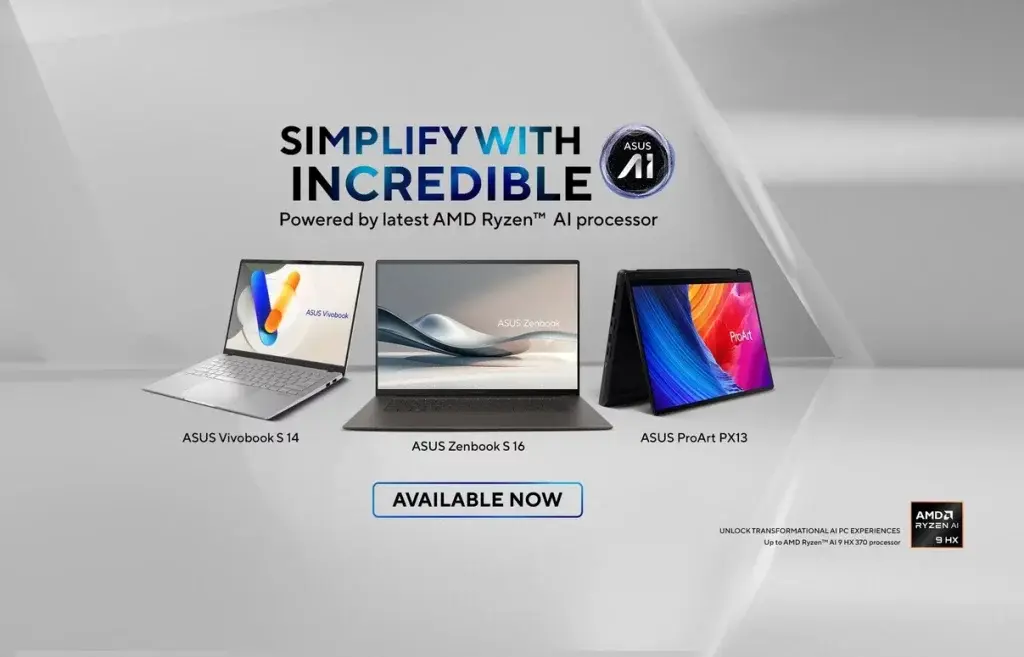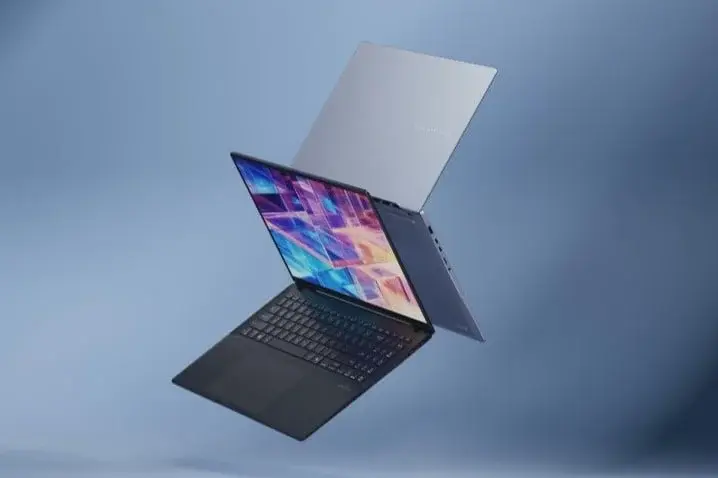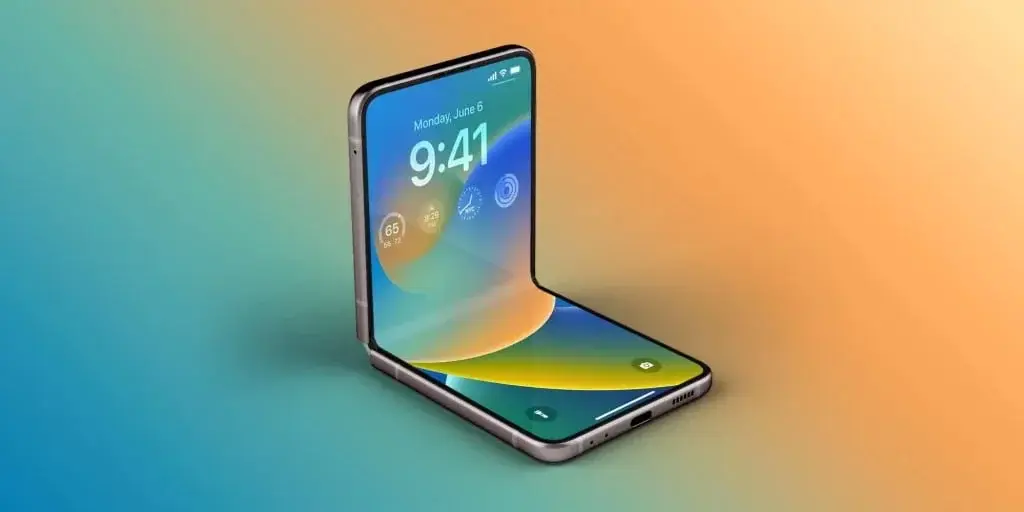ASUS has recently launched several new laptops in India, including the ProArt PX13, Zenbook S 16 OLED, and Vivobook S 14 OLED. These devices are geared towards professionals and creatives, equipped with robust AMD Ryzen AI processors and OLED displays for enhanced performance and visuals.
ASUS ProArt PX13
The ASUS ProArt PX13 is crafted for creative professionals seeking a high-performance yet portable machine. This 13-inch convertible laptop is lightweight, tipping the scales at just 1.38 kg, and features a sleek design with a thickness of 15.8mm.
Its 13.3-inch OLED display provides a 3K resolution and 400 nits of brightness, delivering impressive visuals. The laptop is powered by an AMD Ryzen AI 9 HX 370 processor and an NVIDIA GeForce RTX 4050 Laptop GPU, ensuring robust performance for demanding applications. It also includes 24GB of LPDDR5X RAM and a 1TB M.2 NVMe PCIe 4.0 SSD for ample storage.
The PX13 offers diverse connectivity options, such as Wi-Fi 7, Bluetooth 5.4, and multiple USB ports. It is MIL-STD 810H military-grade tested for durability and features security options like TPM and Windows Hello support.


Zenbook S 16 OLED
The Zenbook S 16 OLED stands as the flagship model of this lineup, blending performance with portability. Despite its powerful specifications, the laptop remains slim at just 1.1 cm thick and weighs 1.5 kg, making it one of the thinnest laptops in its class.
This model is powered by an AMD Ryzen AI 9 HX 370 processor, capable of reaching up to 5.1GHz clock speed with a 36MB cache, and includes an AMD XDNA NPU for enhanced AI operations. Its 16-inch 3K OLED display is striking, with a 120Hz refresh rate and Dolby Vision support. The laptop is outfitted with 32GB LPDDR5X RAM and a 1TB M.2 NVMe PCIe 4.0 SSD for ample storage.
It features a backlit Chiclet keyboard with a Copilot key, AMD Radeon 890M graphics, and an advanced audio system with Dolby Atmos and six speakers by Harman/Kardon. The Zenbook S 16 OLED provides a variety of I/O ports, including USB 3.2 Gen 2 Type-A, USB 4.0 Gen 3 Type-C, HDMI 2.1, a 3.5mm combo audio jack, and an SD 4.0 card reader. It also includes an FHD camera with IR functionality for Windows Hello facial recognition.

Vivobook S 14 OLED
The Vivobook S 14 OLED is designed for users who desire a mix of style and functionality. It boasts a 14-inch 3K OLED display with a 120Hz refresh rate. Powered by an AMD Ryzen 9 HX 370 Processor and a 50 TOPS XDNA2 NPU, it delivers excellent performance for various tasks. The laptop comes with 24GB LPDDR5X RAM and a 512GB PCIe Gen 4 SSD, providing ample memory and storage for everyday activities.
ASUS IceCool Thermal Technology ensures efficient cooling. Its robust design and long battery life make it ideal for travel. Additional features include a secure FHD IR camera, an RGB backlit keyboard, and a large touchpad for enhanced user comfort.


Pricing & Availability
The ProArt PX13 is available at Rs. 1,79,990, while the Zenbook S 16 OLED is priced at Rs. 1,49,990. The Vivobook S 14 OLED comes in two variants, both priced at Rs. 1,24,990. These models are available through various online and offline platforms, including the ASUS Store, Croma, eShop, Flipkart, and Amazon.in.






